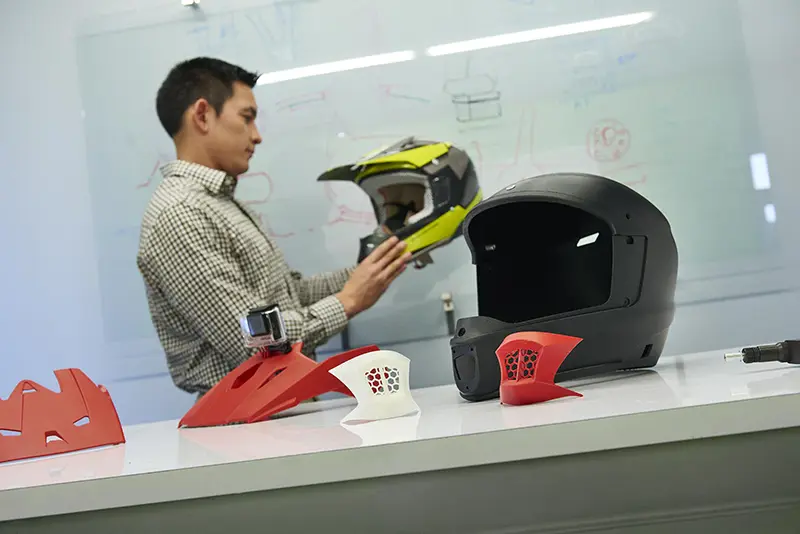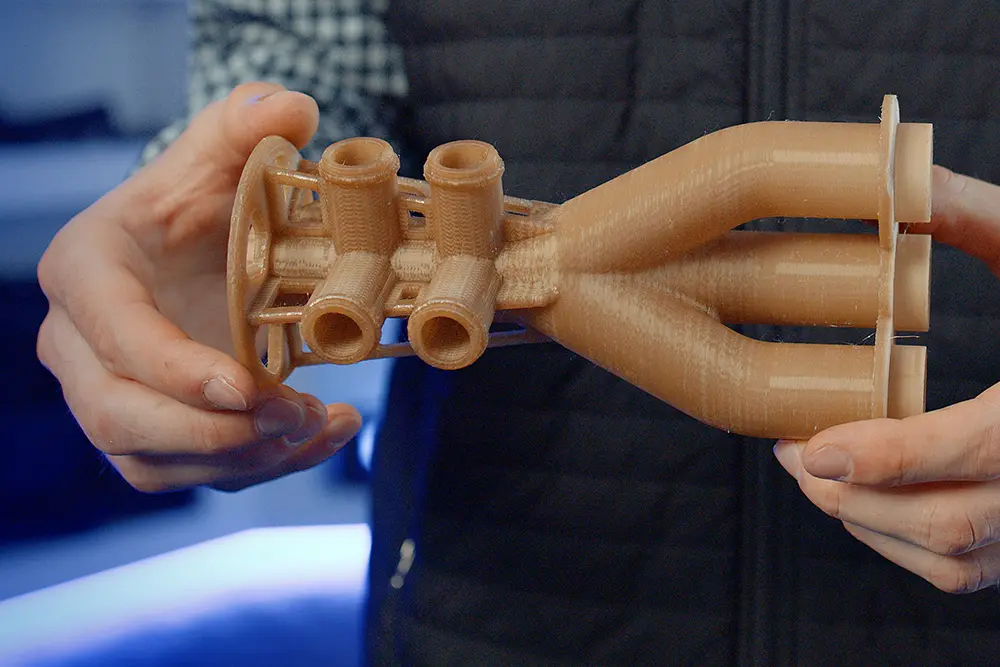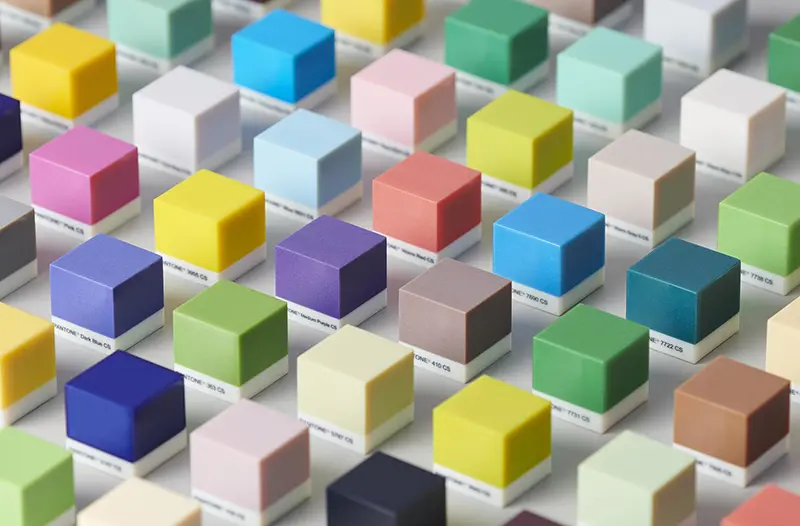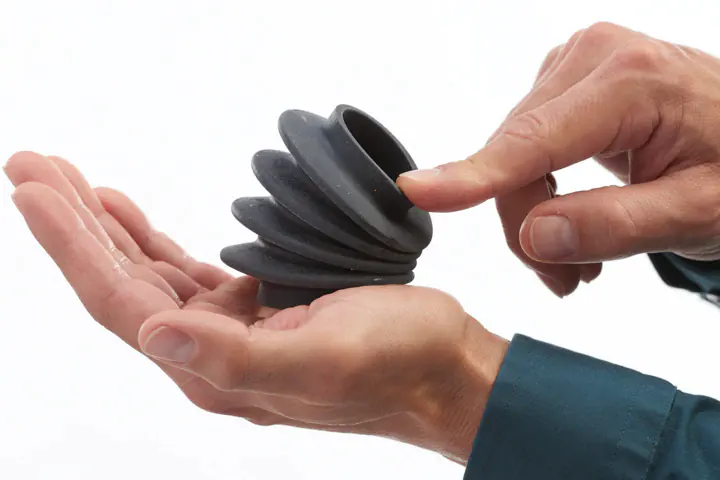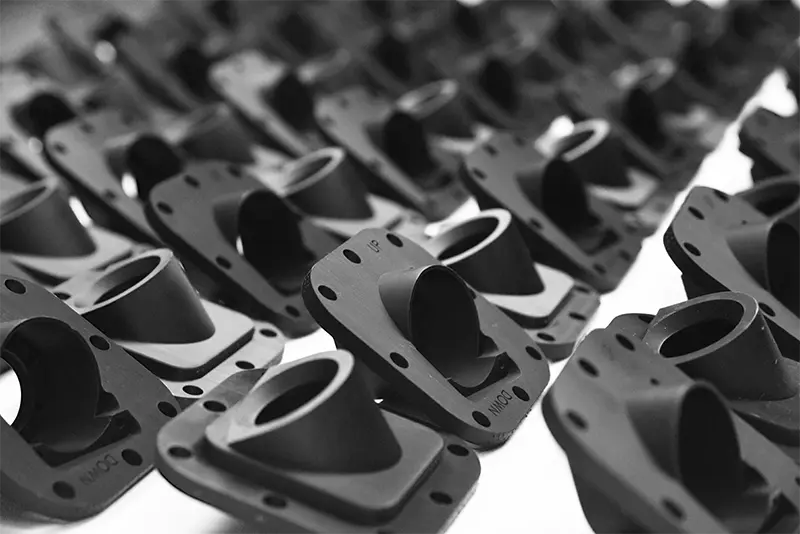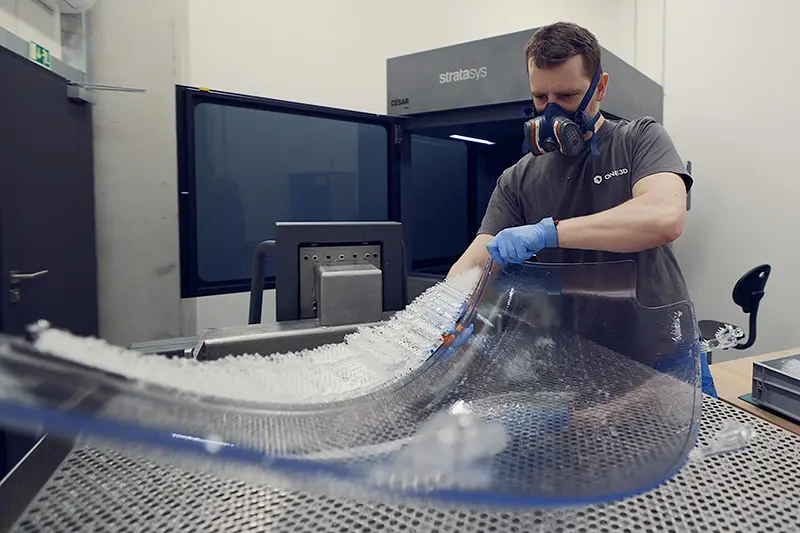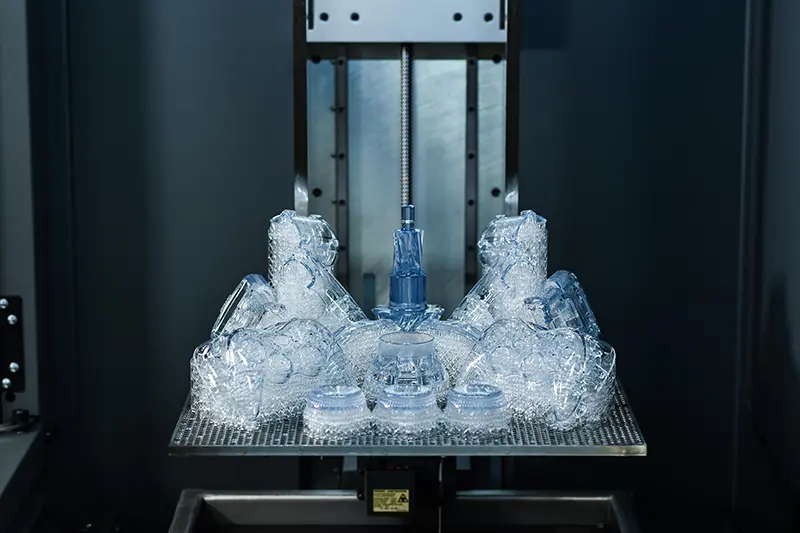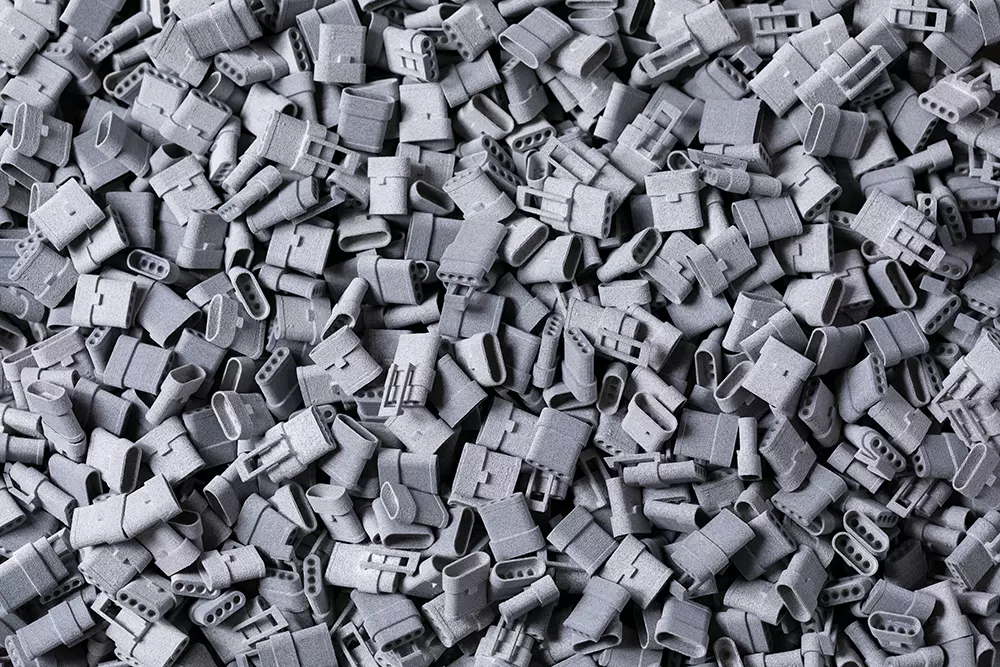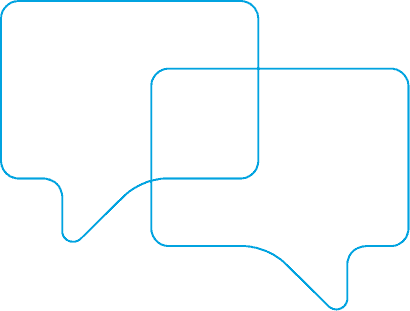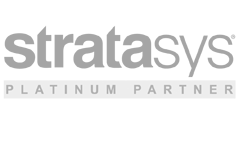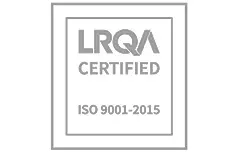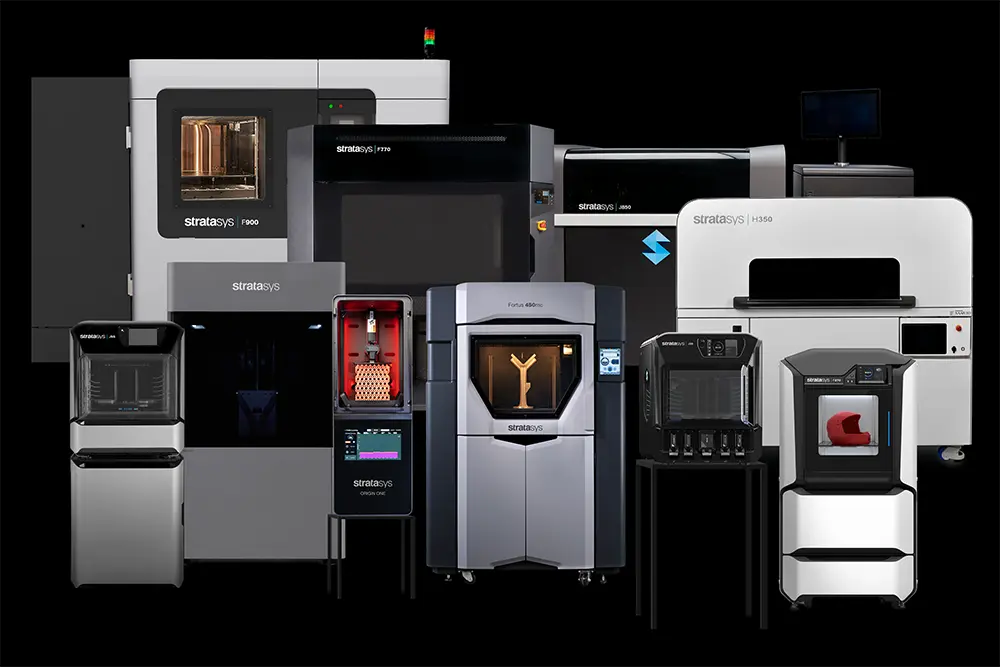
FDM, Polyjet, SLA, DLP or SAF: which is the best additive manufacturing technology for me?
There are a bewildering number of additive manufacturing technologies available to businesses today. All of them have their pros and cons. Here, we will take you through your main options, discussing positive and negative features of each.
The most important questions we ask customers who are considering trying 3D printing/ additive manufacturing for the first time are:
- What are you trying to achieve?
- What are you doing now that you want to do better and more efficiently in the future?
If you are upgrading or adding to your existing 3D printing setup, then these questions are worth thinking about:
- What do you like and not like about your current set up?
- Where is the current piece of kit lacking?
Have a think about your answers to these questions and bear them in mind as we run through the options.
If you want free advice on anything you read here, please get in touch by emailing [email protected] or calling us on 01295 672599.
FDM
- Summary: A popular choice that is good for most applications, especially if budgets are tight.
- Entry-level machine: Stratasys F170
- Largest build envelope: Stratasys F900
- Top spec machine: Fortus 450mc with open materials
Fused Deposition Modelling (FDM) may be a good starting point for many companies. It is a long-standing, proven, flexible technology that is suitable for many applications.
With FDM, the machine feeds a filament of thermoplastic up to a print head. Knurled drive wheels grip the solid filament and force it through a heated tip, where a fine bead of molten material is extruded onto the build sheet. The build platform then lowers in small increments in the Z-axis so that the print head can extrude another layer of material. At the end of the process, a 3D object has been created.
For anyone looking for an additive manufacturing technology that is plug and play, this is the one to choose. With no special environmental considerations, FDM machines can sit in an office environment. As well as being simple to use, they are generally very quiet, clean and tend to be cost-effective as there is very little waste.
There are a wide range of engineering plastics available that will be familiar to anyone that has been manufacturing with polymers. Stratasys FDM machines have a heated build envelope that is tightly controlled, with robust build parameters matched to the FDM material you are using. This helps to provide a stable, reliable environment that eliminates warp and creep, producing repeatable, accurate results.
Parts produced with FDM machines are dimensionally stable and robust, so you can have the confidence to take them to a board meeting and pass them round without worrying that they will be easily damaged.
Post-processing of FDM parts is straightforward. Any downward-facing surfaces will have a support structure added to them automatically using GrabCAD Print software. This keeps the part stable during printing and is easily removed. Many of the Stratasys FDM machines Laser Lines offers can take advantage of soluble support to make post-processing even easier. Any solid material generated can be put into a normal waste system, although the left-over liquid from the soluble support solution needs specialist arrangements to dispose of.
The main challenge that FDM parts have is that the surface finish is not as smooth as with other technologies. That said, if a smooth surface finish is important for a particular part, it may be possible to alter the part’s orientation, which could improve its finish, or reduce the layer thickness at the expense of extending the build time.
Why choose Stratasys?
Stratasys FDM machines are frequently copied, and if you have seen a cheap 3D printer on the internet, it will probably be a smaller, Free Form Fabrication (FFF) machine that is very similar to FDM in principle. These machines tend to require a lot more operator time to get reasonable results, often do not have heated or enclosed build envelopes and are not as accurate or reliable as Stratasys’ FDM machines.
As the inventors of the FDM process, Stratasys is much further down the development road and understands what it takes to make parts that are reliable and repeatable. In a recent study, Stratasys F123 FDM machines produced reliable results 100% of the time with zero hours of downtime, compared to 79% of the time for the closest competitor. They also had 97% accuracy, compared to 57% in the nearest competitor.
Many companies that introduced low-cost FFF machines have come and gone as the challenge of making a viable platform became apparent. With the Stratasys materials ecosystem and software, you have a set of products designed for businesses that want to save time and money when moving from traditional manufacture, rather than appealing to hobbyists. Stratasys FDM machines are excellent tools for industrial use – FFF equivalents are not.
Polyjet
- Summary: For those that need smooth surfaces, fine feature detail and potentially full colour.
- Entry-level machine: Stratasys J35 Pro
- Top spec machine: Stratasys J850 Prime with FabriX
If FDM machines are primarily best being used as an engineering tool, Polyjet machines can be seen as excellent design verification tools. When you need visually attractive, clear, tinted or full colour parts with plenty of detail, Polyjet wins. You can use Polyjet machines to create parts with a strong visual impact, such as consumer goods, or those with soft feel overmoulds.
In Polyjet machines, a photosensitive epoxy resin is inkjet-printed and simultaneously cured by a UV lamp. A small amount of cured resin is then removed to create a completely flat surface for the next layer. This enables each layer to be very thin, down to 14µm, making the surface of the finished product very smooth indeed. It also allows for very fine feature detail, with one of the best model aesthetics of any of the technologies here.
Not only can Polyjet machines print in full colour, but the colours are also Pantone-certified, giving you the confidence that the colours of any Colour, Material, Finish (CMF) prototype models you produce will look the same as the finished products.
Polyjet machines are good for overmoulding as they give you the ability to print with different Polyjet materials within the same part, or using multiple materials on the same build. For example, it is easy to produce a soft grip screwdriver, or any other tactile element with a hard substrate, in one build.
In common with other resin-based machines, you ideally need a separate area to post-process the parts after they have been printed. The machines themselves can sit in an office environment if you need them to, but post-processing normally involves a water jet cabinet or wash cabinet to remove the support structure, which can be noisy and wet. If the model you are producing has very fine details, a soluble support material is available that dissolves in tap water inside a tank that heats and agitates the water. This removes any danger of a water jet damaging the model when removing support.
Downward-facing surfaces will come out of the machine with a matt appearance, but can be polished if needed as part of post-processing. Although parts produced by Polyjet look incredible and feel like the real part, they do not tend to be as strong as parts produced by FDM machines or the other technologies below. This is why they tend to be used in product verification, along with fit and form testing.
For example, when designing products such as vacuum cleaners, many of our customers tend to use FDM machines for engineering prove-outs, housings, covers, tubing and connectors. But when it is time to show something to the marketing team or customers, they turn to Polyjet to achieve the visual realism they need for that stage of the product design process.
One other consideration is that you need to take extra care when disposing of unused UV resin – this cannot enter the domestic waste chain. You will need a specialist company to dispose of this for you.
Why choose Stratasys?
Polyjet is a very well developed and well understood technology that has very few direct competitors. It has a rich, full colour materials ecosystem, and you won’t feel like you are undertaking the R&D for the manufacturer, as you might with some rival systems. It works out of the box and has a proven track record of reliability and ease of use.
P3 Origin
- Summary: A replacement for injection moulding, producing large batches of parts quickly.
- Available as: Stratasys Origin One
This resin-based technology offers huge flexibility for users, creating parts with an excellent surface finish that have better engineering properties than those created with Polyjet machines. Programmable PhotoPolymerization (P3) technology is an extension of Digital Light Processing (DLP), where a thin layer of resin is held between a build plate and a flexible, transparent membrane. An image is projected onto the resin curing it and forming a layer of the part. Rather than the Z stage stepping down into the resin, the build plate moves up, with fresh resin coated on top of the cured layer. One benefit of this process is that it requires relatively small amounts of material in the build tray.
With support for open build parameters, you are not tied to one material supplier and have a huge array of mechanical properties to choose from when it comes to selecting your material. P3 resins from the leading material manufacturers such as BASF, DSM and Loctite are dealt with very well by P3 machines.
P3 Origin machines are particularly adept at creating small parts quickly. The flexible platform means that they can produce several builds using different material types in a day. It is easy to switch from, for example, an elastomeric material to a high temperature then to an engineering material if you have different trays. The process is highly repeatable, making it perfect for longer runs.
Unlike Polyjet, however, this is not the best technology for prototyping or for making just one or two parts. Its huge flexibility requires time and technical expertise to master. Typically, an operator will build a few trial pieces of a part, tweaking the build parameters until everything is perfect. Once that work has been done, the machine can make hundreds or even thousands of the same part, and you can be confident that repeatability will be very high.
P3 materials have the same disposal considerations as those with Polyjet or SAF (see below), while parts need to be post-processed by washing off excess resin with IPA or TPM, after which they are cured.
Why choose Stratasys?
Origin P3 is the standard that the major materials companies use to develop their DLP materials with. This is due to the number of sensors and controls that the technology offers, enabling predictable, stable builds and better results overall. So even though the resins used on P3 machines can also be used on rivals, we would expect the best material properties to be achieved with P3.
SLA
- Summary: For large, ultra smooth parts, whether single or longer runs.
- Entry-level machine: Stratasys Neo450e
- Top-spec machine: Stratasys Neo800
When size matters, turn to Stereolithography (SLA). The Neo machines from Stratasys can produce much larger parts than those created with P3 Origin machines, while still providing exceptional surface finish and good repeatability.
SLA is one of the oldest 3D printing technologies and relies on a laser to scan the surface layer of a resin. After each layer has been cured, the Z stage steps down into the vat, while a new layer of resin is recoated on top to be cured. As with other resin technologies, the parts need to be washed and cleaned once removed from the machine, then cured in a UV oven.
The Neo machines are an excellent choice for industrial-scale volumes of larger parts, or you can fill the build volume of a machine with several smaller parts to produce at once. Formula 1 teams use Neos to produce wind tunnel models with ceramic filled resin, for example.
Stratasys SLA machines are generally faster than FDM machines at producing large parts, while producing a smoother finish and finer feature detail. You won’t need to produce trial parts as with the P3 machines, as the machine parameters are robust and tend to be better understood across the industry. With an open material architecture, it is likely that those upgrading from an old legacy SLA machine will be able to use their existing SLA materials.
One thing to bear in mind is that Neo machines can only realistically be used for one material, and the same post-processing and disposal requirements exists as for the other resin-based technologies.
Why choose Stratasys?
The Neo range of SLA machines was designed by British company RPS that had many years of experience servicing other companies’ machines. These engineers decided to take their knowledge and make their own machine, introducing a huge number of improvements to the SLA process that makes it the most reliable, accurate system in its field. Stratasys bought RPS, adding its logistical, sales and support strengths to make the offering even better. No comparable system comes close.
SAF
- Summary: Production-level throughput for end-use parts
- Available as: Stratasys H350
Selective Absorption Fusion (SAF) machines are all about volume, volume, volume. They allow for many batches of highly repeatable parts and are excellent for small to medium-sized parts, as the high packing density of around 22% is the best in the field.
A refinement of powder bed fusion, the technology lays down a layer of powder that has a high absorption (HAF) fluid jetted onto its surface. An infra-red source melts the pre-heated powder into a solid form. The system employs many innovations to control the temperature of the build, avoiding hotspots occurring and improving repeatability and accuracy.
As it is not laser based, the SAF machine heats materials such as Nylon 11 and Nylon 12 at lower temperatures than with other technologies. This means you don’t tend to see the warp creep or elephant peel that can be characteristic of alternative additive manufacturing methods.
Although SAF systems are well suited to industrial levels of production, they also cope well when directed to make parts in ones and twos. Users tend to stick to one material on a machine – they can be changed, but it is not something you would want to do often.
As with any powder bed fusion technology, specialist facilities are needed to deal with health and safety requirements. This typically involves putting the machine in a dedicated, enclosed area with filtered air, along with procedures and equipment to avoid breathing the powder in. Unused powder requires a specialist service to dispose of it properly.
Why choose Stratasys?
SAF is the latest evolution of powder bed fusion technology and solves many of the problems that other machines had when implementing the technology. With the highest nesting density of the available options and low powder ageing, you have the reassurance of the Stratasys R&D team, logistics and support team to keep your production projects on track.
If you need free advice on the best additive manufacturing machine for your needs, call us on 01295 672599 or email [email protected].

